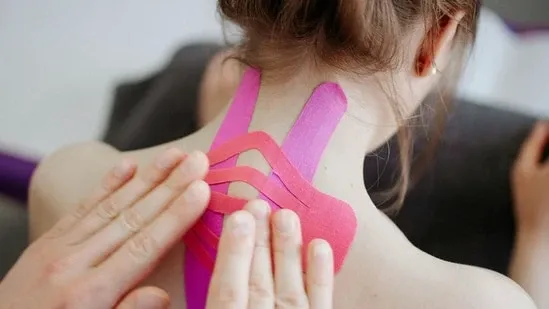While it is an effective healthcare practice, physiotherapy is often shrouded in myths and misconceptions. In an interview with HT Lifestyle, Dr Dharam P Pandey, director and HOD, physiotherapy and rehabilitation sciences, HCMCT Manipal Hospitals, Dwarka Delhi said, "Physiotherapy is about restoring function, improving quality of life, and preventing future health problems, not just pain relief. Let's break down some of the most common misconceptions and highlight what physiotherapy really offers."
Physiotherapist suggests 8 stretching and strengthening exercises to relieve leg pain and improve mobility
Myth 1: Physiotherapy is only for athletes or injured people
Fact: Physiotherapy is for everyone, from children with developmental issues to working professionals with posture-related problems, seniors with mobility challenges, or anyone recovering from surgery. It's not limited to sports injuries or accidents.
Myth 2: Physiotherapy is only about muscles and bones
Fact: While musculoskeletal problems are common, physiotherapists also manage neurological conditions (like stroke, Parkinson's), cardiopulmonary issues (such as post-COVID recovery, chronic lung conditions), women's health concerns (prenatal/postnatal care, pelvic floor therapy), and even balance or vestibular disorders.
Myth 3: Physiotherapy should hurt to be effective
Fact: Good physiotherapy is designed to reduce pain, not increase it. Skilled therapists ensure exercises and techniques are safe, progressive, and within your comfort level - focusing on restoring movement without unnecessary discomfort.
 Myth 4: Physiotherapy is just exercise
Fact
Myth 4: Physiotherapy is just exercise
Fact: Exercise is important, but physiotherapy goes far beyond that. It may include manual therapy (massage, mobilisations), electrotherapy (ultrasound, TENS), postural training, ergonomic advice, and patient education to prevent recurrence.
Myth 5: You can stop once the pain is gone
Fact: Pain relief is only the first step. Continuation helps rebuild strength, flexibility, and endurance, ensuring long-term recovery and reducing the risk of the issue returning.
Myth 6: A doctor's referral is always needed
Fact: In many places, patients can directly consult a physiotherapist without waiting for a referral, thanks to the concept of direct access. This speeds up treatment and recovery.
Myth 7: Complete rest is the best way to heal
Fact: While short-term rest may be necessary, prolonged inactivity often delays healing. Guided movement and structured rehabilitation are key to faster recovery and preventing stiffness or long-term complications.

 Myth 4: Physiotherapy is just exercise
Fact: Exercise is important, but physiotherapy goes far beyond that. It may include manual therapy (massage, mobilisations), electrotherapy (ultrasound, TENS), postural training, ergonomic advice, and patient education to prevent recurrence.
Myth 5: You can stop once the pain is gone
Fact: Pain relief is only the first step. Continuation helps rebuild strength, flexibility, and endurance, ensuring long-term recovery and reducing the risk of the issue returning.
Myth 6: A doctor's referral is always needed
Fact: In many places, patients can directly consult a physiotherapist without waiting for a referral, thanks to the concept of direct access. This speeds up treatment and recovery.
Myth 7: Complete rest is the best way to heal
Fact: While short-term rest may be necessary, prolonged inactivity often delays healing. Guided movement and structured rehabilitation are key to faster recovery and preventing stiffness or long-term complications.
Myth 4: Physiotherapy is just exercise
Fact: Exercise is important, but physiotherapy goes far beyond that. It may include manual therapy (massage, mobilisations), electrotherapy (ultrasound, TENS), postural training, ergonomic advice, and patient education to prevent recurrence.
Myth 5: You can stop once the pain is gone
Fact: Pain relief is only the first step. Continuation helps rebuild strength, flexibility, and endurance, ensuring long-term recovery and reducing the risk of the issue returning.
Myth 6: A doctor's referral is always needed
Fact: In many places, patients can directly consult a physiotherapist without waiting for a referral, thanks to the concept of direct access. This speeds up treatment and recovery.
Myth 7: Complete rest is the best way to heal
Fact: While short-term rest may be necessary, prolonged inactivity often delays healing. Guided movement and structured rehabilitation are key to faster recovery and preventing stiffness or long-term complications.